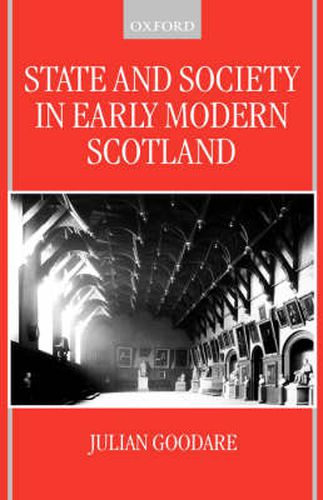Readings Newsletter
Become a Readings Member to make your shopping experience even easier.
Sign in or sign up for free!
You’re not far away from qualifying for FREE standard shipping within Australia
You’ve qualified for FREE standard shipping within Australia
The cart is loading…






This is the first full scholarly study of state formation and the exercise of state power in Scotland. It sets the Scottish state in a British and European context, revealing that Scotland - like larger and better-known states - developed a more integrated governmental system in the sixteenth and seventeenth centuries. This study provides an invaluable new contribution to the history of Scotland. Julian Goodare shows how the magnates ceased to exercise autonomous local power, and instead managed the new administrative structure through client networks. The state no longer drew its main revenues from land, but developed new taxes; its fighting forces were modernized and detached from landed power. With the Reformation, powerful church institutions were created, and were gradually integrated into the state. The states territorial integrity increased, giving it a closer and more troubled relationship with the Highlands. Scotland remained a sovereign state even after the union of crowns in 1603, but it was finally absorbed by England in 1707, and Dr Goodare examines the long-term context of this development.
$9.00 standard shipping within Australia
FREE standard shipping within Australia for orders over $100.00
Express & International shipping calculated at checkout
This is the first full scholarly study of state formation and the exercise of state power in Scotland. It sets the Scottish state in a British and European context, revealing that Scotland - like larger and better-known states - developed a more integrated governmental system in the sixteenth and seventeenth centuries. This study provides an invaluable new contribution to the history of Scotland. Julian Goodare shows how the magnates ceased to exercise autonomous local power, and instead managed the new administrative structure through client networks. The state no longer drew its main revenues from land, but developed new taxes; its fighting forces were modernized and detached from landed power. With the Reformation, powerful church institutions were created, and were gradually integrated into the state. The states territorial integrity increased, giving it a closer and more troubled relationship with the Highlands. Scotland remained a sovereign state even after the union of crowns in 1603, but it was finally absorbed by England in 1707, and Dr Goodare examines the long-term context of this development.